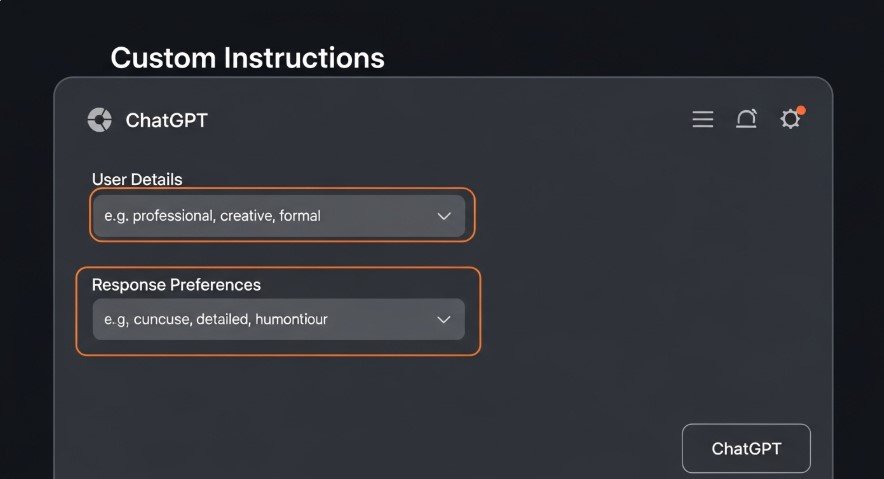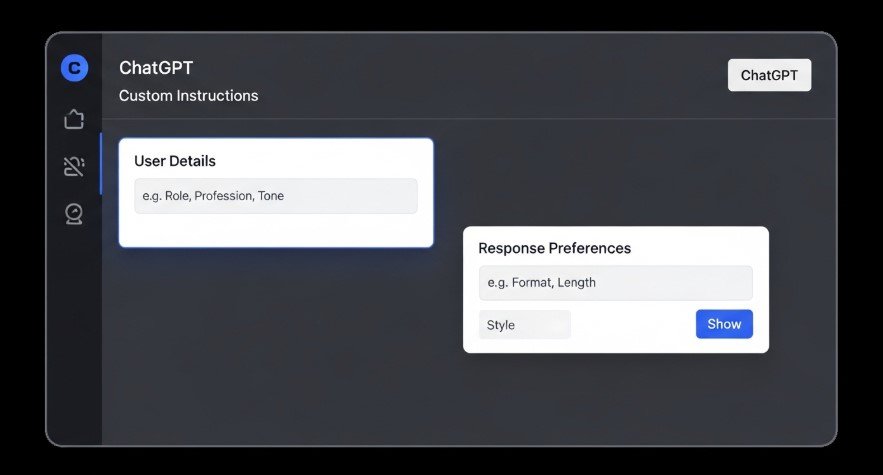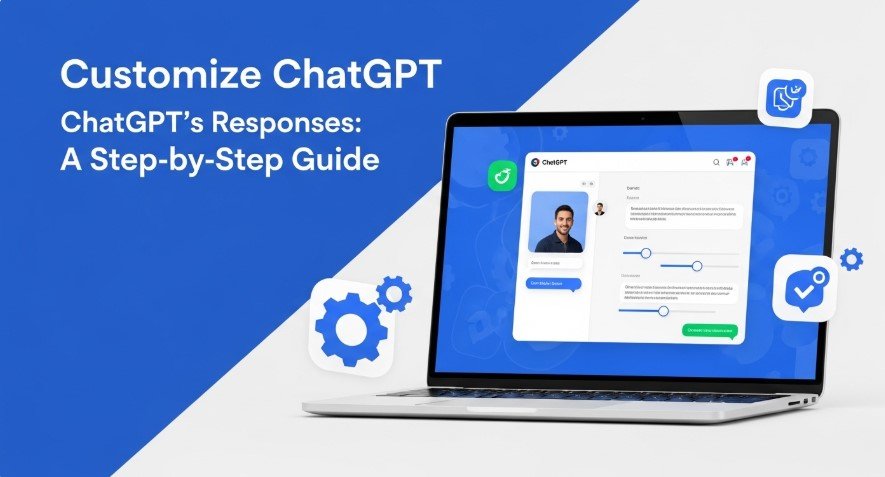ChatGPT, developed by OpenAI, is a powerful AI tool that can answer questions, write content, and even code. Its custom instructions feature lets you personalize how it responds, making it more useful for your specific needs. Whether you’re a student, professional, or casual user, this guide will show you how to customize ChatGPT’s responses to save time and get better results. We’ll cover what custom instructions are, how to set them up, best practices, and advanced tips, all in simple, clear language.
What Are Custom Instructions?
Custom instructions let you tell ChatGPT about yourself and how you want it to answer. For example, you can set it to always respond in a formal tone or include code examples. This feature, launched in July 2023, is currently available for Plus plan users, with plans to expand to all users soon. It saves you from repeating preferences in every chat, making interactions faster and more relevant.
Key Benefits:
- Tailors responses to your role, like teacher or coder.
- Saves time by applying preferences automatically.
- Improves accuracy for specific tasks.

How to Set Up Custom Instructions
Setting up custom instructions is quick and works on both web and mobile platforms. Follow these steps:
On the Web
- Log in to chat.openai.com.
- Click your profile name in the bottom left.
- Select “Custom Instructions” from the menu.
- Fill in two boxes:
- About You: Share your role or context (e.g., “I’m a high school teacher”).
- Response Preferences: Specify tone, format, or details (e.g., “Use bullet points and simple language”).
- Click “Save.”
On Mobile (iOS/Android)
- Open the ChatGPT app.
- Tap the three dots in the top right.
- Go to “Settings” and select “New Features.”
- Enable “Custom Instructions.”
- Enter your preferences and save.
Note: As of July 2025, this feature is for Plus plan users only, costing $20/month, but OpenAI plans to roll it out to free users soon.
Check out how ChatGPT can help with specific tasks like writing performance reviews.
Best Practices for Custom Instructions
To get the best results, write clear and specific instructions. Here are some tips:
- Be Clear About Your Role: Say “I’m a Python developer” instead of “I code.”
- Set the Tone: Choose formal, casual, or academic responses.
- Specify Format: Request bullet points, tables, or short paragraphs.
- Test and Adjust: Try different prompts and tweak instructions if needed.
| Tip | Example | Why It Helps |
|---|---|---|
| Clear Role | “I’m a data analyst using SQL.” | Ensures relevant, technical responses. |
| Set Tone | “Use a friendly, casual tone.” | Matches your communication style. |
| Test Instructions | Test with a sample question. | Refines accuracy over time. |

Examples for Different Users
Custom instructions work for many professions. Here are examples:
- Students: “I’m a history major. Provide detailed explanations with sources in MLA format.”
- Developers: “I’m a JavaScript developer. Include code snippets and explain errors.”
- Marketers: “I run a small business. Suggest SEO-friendly content with meta descriptions.”
- Teachers: “I teach 5th-grade math. Use simple terms and examples kids understand.”
- Writers: “I write travel blogs. Use a storytelling style with vivid descriptions.”
Learn how to use ChatGPT for SEO optimization compared to Semrush.
Advanced Use-Cases
Custom instructions can go beyond basic tasks. Try these ideas:
- Customer Support: Set responses to handle common questions consistently.
- Research: Request citations and summaries for academic papers.
- Content Creation: Generate blog outlines or social media posts with specific keywords.
- Coding: Ask for debugging tips or best practices in your programming language.
Example Prompt: “I’m a content creator. Generate a 200-word blog post outline on AI trends, including H2 and H3 headings with the keyword ‘AI trends’ twice.”
Common Issues and Fixes
Sometimes, custom instructions don’t work as expected. Here’s how to troubleshoot:
- Unclear Responses: Rewrite instructions to be more specific (e.g., “Use 100-word answers”).
- Character Limits: Each box has a 1,500-character limit, so prioritize key details.
- Inconsistent Tone: Specify tone clearly, like “formal” or “conversational.”
| Issue | Fix | Example |
|---|---|---|
| Unclear Responses | Add specific details. | “Explain in 100 words or less.” |
| Wrong Tone | Set tone explicitly. | “Use a professional tone.” |
| Character Limit | Focus on essentials. | Prioritize role and format. |
Privacy and Safeguards
ChatGPT has safeguards to ensure safe use:
- Restricted Prompts: It won’t answer unethical or harmful requests.
- Data Privacy: You can opt out of data usage for model training via Settings > Data Controls.
- Memory: Turn off memory for sensitive chats to avoid data retention.
Read more about ChatGPT’s privacy in Does ChatGPT Track You?.
Tips to Maximize ChatGPT
To get even better results:
- Update instructions as your needs change.
- Use voice mode for hands-free tasks (available on Plus plan apps).
- Integrate with tools like Zapier for automation.
Frequently Asked Questions
What are custom instructions in ChatGPT?
They let you set preferences for how ChatGPT responds, like tone or format.
Who can use custom instructions?
Currently, only Plus plan users, but free access is coming soon.
How do I edit custom instructions?
Go to Settings, update the boxes, and save.
Can ChatGPT ignore my instructions?
It may if instructions are unclear. Test and refine them.
Is my data safe with custom instructions?
You can opt out of data training in Settings for added privacy.
Conclusion
Customizing ChatGPT’s responses makes it a more powerful tool for your needs, whether for work, study, or personal projects. By setting clear instructions, testing them, and exploring advanced uses, you can save time and get precise answers. Start experimenting today to make ChatGPT work for you.
